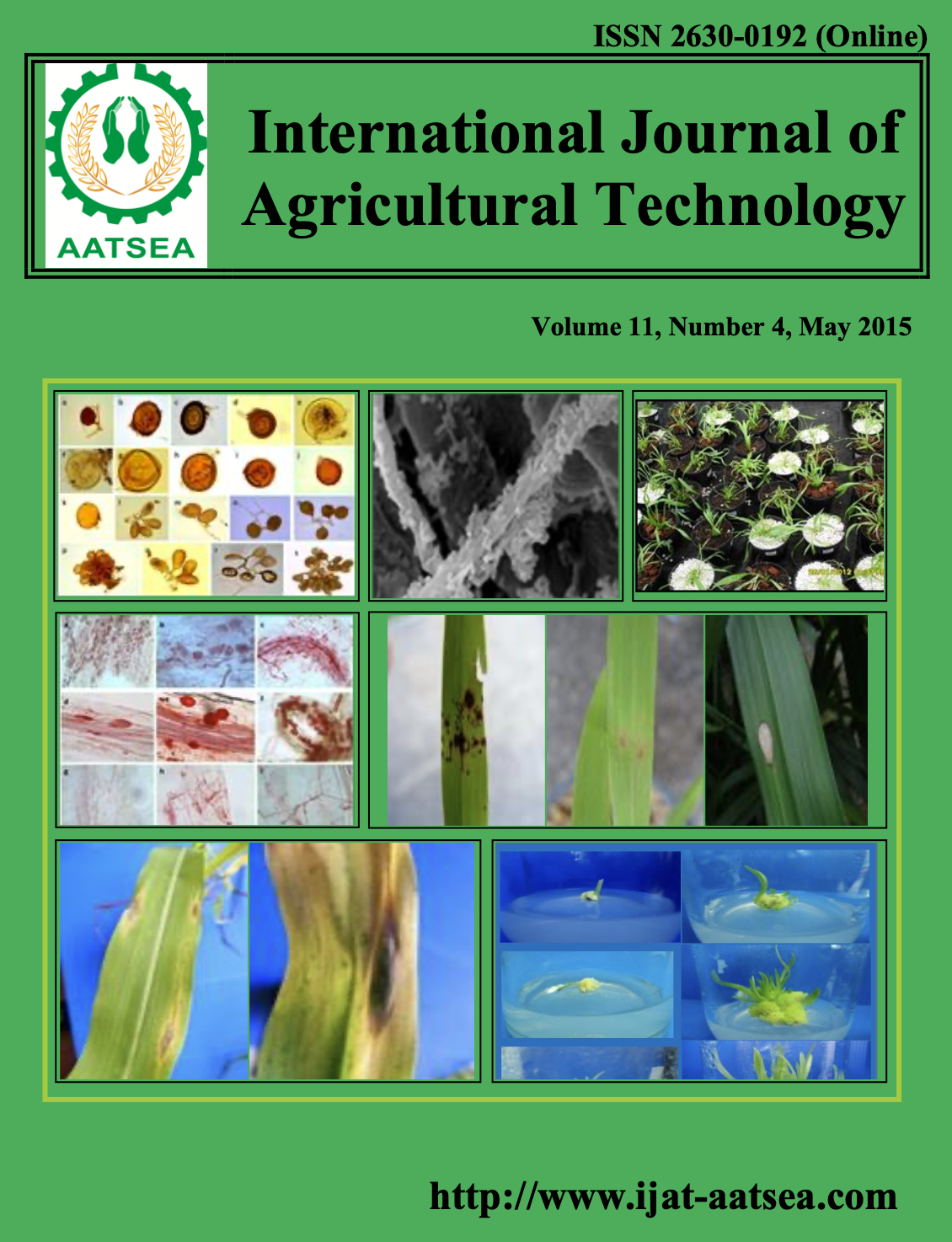Effect of halo (KCl) priming on seed germination and early seedling growth of wheat genotypes under laboratory conditions
Main Article Content
Abstract
Article Details

This work is licensed under a Creative Commons Attribution-NonCommercial-NoDerivatives 4.0 International License.
References
Ahmad, R., Shahzad, S. M., Khalid, A., Arshad, M. and Mahmood, M. H. (2007). Growth andyield response of wheat (Triticumaestivum L.) and maiz (Zea mays L.) to nitrogen and L-tryptophan enriched compost. Pakistan Journal of Botany 39:541-549.
Anonymous (2000). FAO production year book. Rome, Italy.
Ashraf, M., Zafar, Z. U. and Ansari, T. M. (1997). Accumulation of some essential by lentils (Lensculinary) plants at low potassium regimes. Arid Soil Research and Rehabilitation 11:95-103.
Baligar, V. C., Fageria, N. K. and He, Z. L. (2001). Nutrient use efficiency in plants. Communications in Soil Science and Plant Analysis 32:921-950.
Beltrano, J. and Marta, G. R. (2008). Improved tolerance of wheat plants (Triticum aestivum L.) to drought stress and rewatering by the arbuscular mycorrhizal fungus Glomus claroideum: Effect on growth and cell membrane stability. Brazilian Journal of Plant Physiology 20:29-37.
Epstein, E. and Bloom, A. (2005). Mineral nutrition of plants: Principles and perspectives 2rd edition. Sinauer Associates, Inc.
Fageria, N. K., Filho Barbosa, M. P. and da Costa, J. G. C. (2001). Potassium use efficiency in common bean genotypes. Journal of Plant Nutrition 24:1937-1945
Gill, M. A., Tahir, M. A., Rahmatullah, A. T. and Yousaf, A. (2005). Genotypic variation of chickpea (Cicerarietinum L.) grown under adequate and K deficiency stress in hydroponics culture. Pakistan Journal of Agricultural Sciences 42:22-26.
Greenwood, D. J. and Karpinets, T. V. (1997). Dynamic model for the effects of K fertilizer on crop growth, K uptake and soil K in arable cropping. I -Description of model. Soil use and management 13:178-183.
Hunt, R. (1982). Plant growth curves. An introduction to the functional approach to the plant growth analysis. London: Edward Arnold. pp.125-130.
Lynch, J. P., Lynch, A. F. and Janthan, P. (2007). Roots of the second green revolution. Australian Journal of Botany 55:493-512.
Makhdum, M. I., Pervez, H. and Ashraf, M. (2007). Dry matter accumulation and partitioning in cotton (Gossypium hirsutum L.) as influenced by potassium fertilization. Biology and Fertility of Soils 43:295-301.
Malik, M. A., Irfan, M., Ahmed, Z. I. and Zahoor, F. (2006). Residual effect of summer grain legumes on yield and yield components of wheat (Triticum aestivum L.). Pakistan Journal of Agriculture, Agricultural Engineering and Veterinary Sciences 22:9-11.
Miller, R. O. (1998). Nitric – perchoric wet acid digestion in on open vessel. In Kalra, Y. P. (Ed.) Handbook of reference methods for plant analysis, Washington, DC., USA.: CRC press. pp. 57-62.
Muhammad, A., Ur-Rehman, M. and Zafar, Y. (2005). DNA finger printing studies of some wheat (Triticum aestivum L.) genotypes using Random Amplified Polymorphic DNA (RAPD) analysis. Pakistan Journal of Botany 37:271-277.
Osaki, M., Ueda, H., Shinono, T., Mastui, H. and Tandano, T. (1995). Accumulation of carbon and nitrogen compounds in sweet potato palnts grown under of deficiency of N.P, or K. nutrients. Soil Science and Plant Nutrition 41:557-566.
Rashid, M. and Ahmed, N. (2003). Fertilizers and their use in Pakistan. Extension bulletin. NFDC, Islamabad and Plant Analysis. 32:171-187.
Rengel, Z. and Damon, M. P. (2008). Crops and genotypes differ in efficiency of potassium uptake and use. PhysiologiaPlantarum 133:624-636.
Rengel, Z. and Marschner, P. (2005). Nutrient availability and management in the rhizosphere: exploiting genotypic differences. New phytology 168:305-312.
Russel, D. F. and Eisensmith, S. P. (1983). MSTAT-C. Crop and Soil Science Department, Michigan State University, East Lansing, MI, USA. pp. 35-46.
Sial, N. B., Ul-Hassan, Z. and Khan, H. (2003). Effect of integrated use of N, P and Hal-Tonic on soil properties, micronutrient content and yield and yield components of wheat. International Journal of Agriculture and Biology 5:585-588.
Siddiqi, M. Y. and Glass, A. D. (1981). Utilization index: a modified phosphorus nutrition of eight forms of two clover species, Trifolium ambiguum and Trifolium repens. Journal of Plant Nutrition 4:289-302.
Steel, R. G. D. and Torrie, J. H. (1980). Principles and procedures of statistics. New York, U.S.A.: McGraw Hill Book Company Inc. pp. 42-48.
Yang, X. E., Liu, J. X., Wang, W. M., Li, H., Luo, A. C., Ye, Z. Q. and Yang, Y. (2007). Genotypic differences and some associated plant traits in potassium internal use efficiency of low land rice (Oryza sativa L.). Nutrient cycling in agroecosystems 67:273-282.
Zhang, G., Chen, J. and Tirore, E. A. (1999). Genotypic variation for potassium uptake and utilization efficiency in wheat. Nutrient Cycling in Agro Ecosystems 54:41-48.


